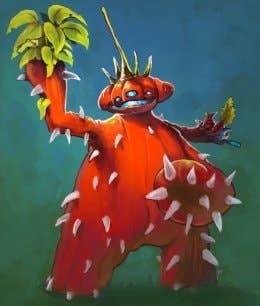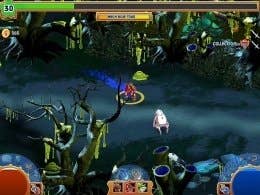Branching Out
Funcom's Trond Arne Aas and Jon Wright discuss the company's new entry into the kids' online space
While Funcom's Age of Conan was one of the biggest MMO launches to-date, the struggle to maintain a strong subscriber base has been a challenge it has shared with other members of the industry. But today the company is announcing the first title to be published under its new Sweet Robot label, Pets vs Monsters - an online game aimed at a much younger, more casual audience.
Here, Funcom's CEO Trond Arne Aas and Pets vs Monsters producer Jon Wright talk to GamesIndustry.biz about the thinking behind the company's expanded direction, what their hopes are for the new market and what it can bring to the business overall.
Basically what we wanted to do with Pets vs Monsters was build upon Funcom's traditions for good RPG systems and RPG mechanics - levelling, grinding monsters, completing quests and character development, and bring that to a much younger audience than anybody's really brought it before.
So taking kids from a Club Penguin age and giving them a nice, gradual introduction to what people call a sort of Diablo-style mechanic and gameplay.
Throughout the game you're really transitioning the player from chasing experience points (XP), levelling and that kind of thing and turning it into an item-centric game - so they start chasing items, collecting gear, wanting the right armour and that kind of thing.

Those are really the goals for the game's design - on top of that is the setting, and what we wanted to do there was really create a great relationship between the avatar - the character that the player associates with - and the pets that they collect throughout the game.
The relationship is basically that the avatar wears armour and great-looking gear, and rides through the game on a giant beast - whether it's a dog, or a wolf, or a cat, or a bear. Together, in that partnership, you have to complete quests, defeat bad guys, beat bosses and generally achieve great things.
So it's a little bit of collecting pets and equipment, and also levelling and developing your character. It's an isometric game that uses a new Java engine that we've developed - it's a fast download, so you're into the game quickly, and it's very casual-friendly.
We're planning on starting the beta for the game this month.
We've done a lot of focus and usability testing throughout the entire development of the game, and we've had successful play tests down to kids at four years old. Now, at that age, they're really not getting some of the more complicated mechanics, but in terms of running through levels, killing monsters, collecting XP - that works all the way down to four.
At around six years old you start to see them understand what the gear does, and at around eight years old you start to see them equipping the right sort of gear for the right sort of thing - so the demographic is really as young as we can make it, and holding through to... I mean, we enjoy it in the office, and we're in our thirties...
Yes - it's mostly about the user interface, and making sure that's accessible. That's an ongoing battle, but one that I feel we're winning.

We still have a relatively open mind on the exact business model. It will be a combination of premium subscriptions and micro-transactions. It depends a bit on the target audience we see that the game appeals to the strongest - with a very young target demographic, let's say six-to-eight, then it's definitely the parents doing all the payments, so it's important they have control over what they're paying. There a subscription model or very predictable model will be used.
For an older demographic you come to an increasing use of micro-transactions - but I think our starting point is a model that's very similar to that used by Wizard 101 for example, with a premium subscription and some micro-transactions on the side.








